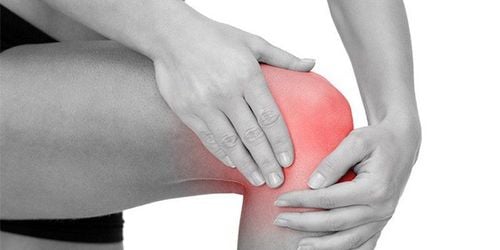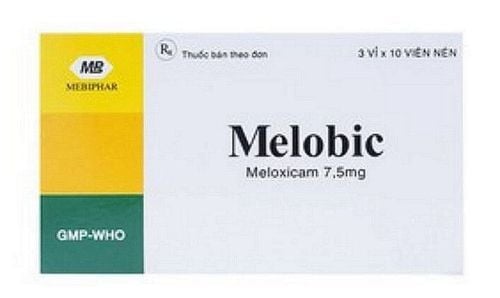This is an automatically translated article.
Capsinac is available as a topical solution. The main ingredients of the drug are Diclofenac sodium and Capsaicin. Patients follow the article below to know what Capsinac is, its uses and how to use it?
1. What is Capsinac?
Capsaicin is an active ingredient in chili peppers that makes them hot. Capsaicin is used in creams and lotions to relieve muscle or joint pain. Diclofenac is a non-steroidal anti-inflammatory drug (NSAID).
Combination of active ingredients Capsaicin and Diclofenac topical (for the skin) to treat joint pain, stiffness and swelling caused by osteoarthritis of the knee. Note that the combination of Capsaicin and Diclofenac may not be effective in treating pain caused by arthritis elsewhere in the body.
Capsinac is indicated for the treatment of the signs and symptoms of osteoarthritis of the knee(s).
Capsinac is contraindicated in the following cases:
People with hypersensitivity to Diclofenac sodium or any other ingredient of the drug. The patient has ever experienced asthma, urticaria or allergic-type reactions after taking aspirin or other NSAIDs. Patients undergoing coronary artery bypass graft (CABG) surgery. Note when using Capsinac:
Capsinac should not be used by pregnant women, nursing mothers or those who intend to become pregnant.
2. Dosage and how to use Capsinac
To reduce the signs and symptoms of osteoarthritis in the knee, the recommended dose is 40 drops in each knee, 4 times a day. Apply Capsinac solution to clean, dry skin.
To avoid spillage, apply 10 drops of Capsinac solution at a time, either directly on the knee or first on the hand and then on the knee. Apply the solution evenly around the front, back and sides of the knee. Repeat this procedure until 40 drops have been applied and the knee is completely covered with the solution. To treat the other knee, if symptoms are present, repeat the procedure.
Some notes when using Capsinac:
Avoid bathing for at least 30 minutes after applying Capsinac. Wash and dry your hands after using Capsinac. Do not apply Capsinac solution to open wounds. Avoid contact of Capsinac solution with eyes and mucous membranes. Do not apply external heat and/or bandages to the knee that has been treated with Capsinac. Avoid dressing the knee being treated with Capsinac until the treated knee is dry. Protect the knee(s) treated with Capsinac from the sun. Wait until the area where Capsinac is applied is dry before applying sunscreen, insect repellent, lotion, moisturizer, cosmetic, or other topical medication. Until the knee(s) applied with Capsinac is completely dry, avoid skin-to-skin contact with other people and between the knee(s) being treated.
3. Capsinac side effects
Side effects you may experience when using Capsinac include:
Abdominal pain ; Allergic reaction; Attenuate; Backache; Body smell; Chest pain; Edema; Facial edema; Halitosis ; Headache; stiff neck; Pain; Nervous; Cardiovascular disorders; Diarrhea; Dry mouth ; Undigested; Gastroenteritis; Decreased appetite; Mouth sores; Nausea; Rectal bleeding; Mouth sores; Increased creatinine; Leg cramps; Muscle pain; Depression ; Dizzy; Sleepy; Comatose; Paresthesia at the injection site; Asthma; Shortness of breath; Larynx; Laryngitis ; Sore throat; Contact dermatitis; Contact dermatitis with blisters; Dry skin; Itchy; Rash; Indigo ; Rash; Itchy; Skin discoloration; Urticaria; Abnormal vision; Blurred vision; Cataract ; Ear hurt; Eye disorders and eye pain. During the use of Capsinac, if you see any unusual symptoms, immediately notify your doctor or go to a medical facility for timely treatment.
4. Capsinac drug interactions
Drug interactions when using Capsinac have not been studied. Combination therapy with Capsinac and oral NSAIDs is not recommended, unless the benefits outweigh the risks and periodic laboratory evaluation is performed.
Above is all information about Capsinac, patients need to carefully read the instructions for use, consult a doctor / pharmacist before using. Note, Capsinac is a prescription drug, patients absolutely cannot buy and treat at home because they may experience unwanted side effects.
References: Drugs.com













